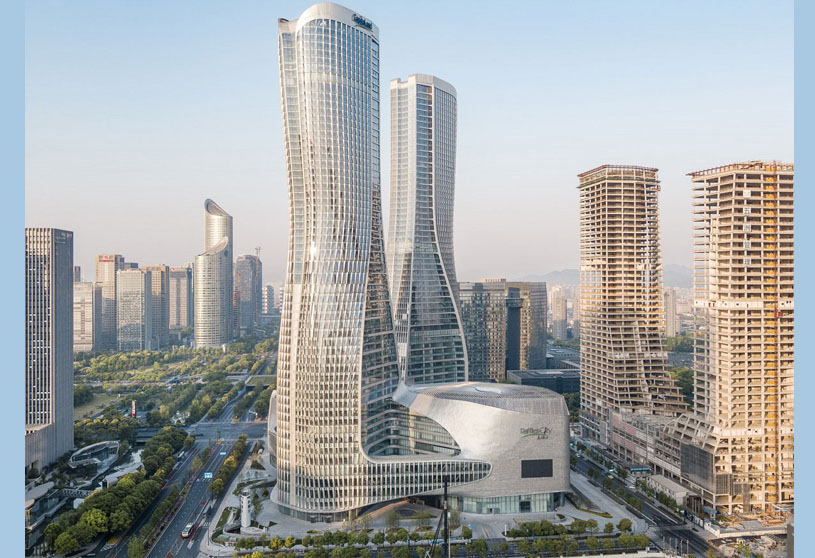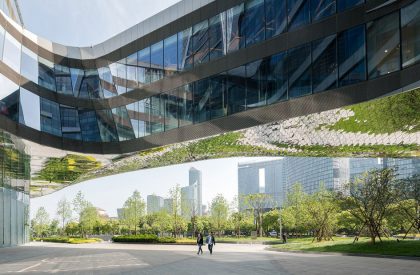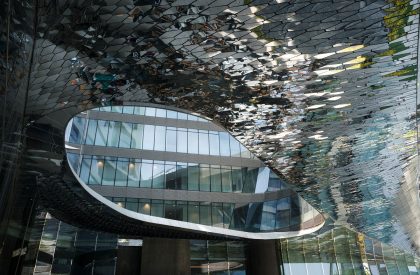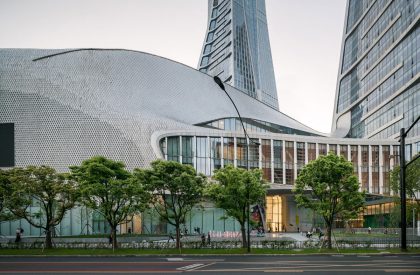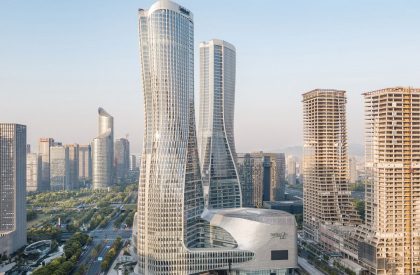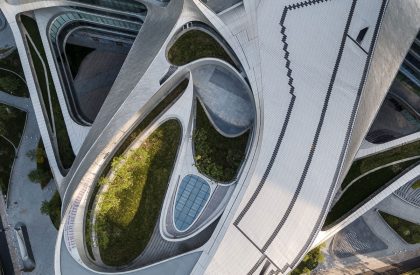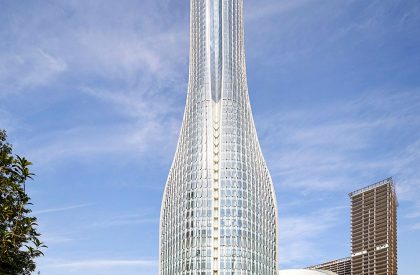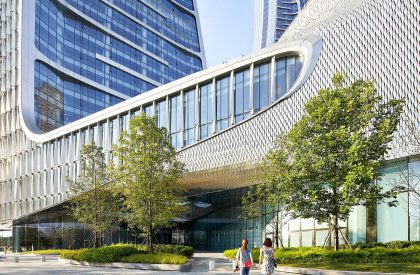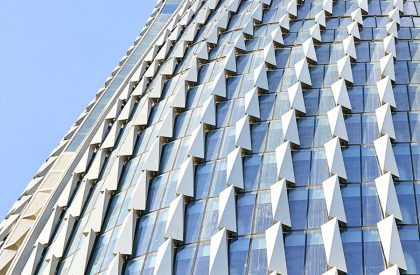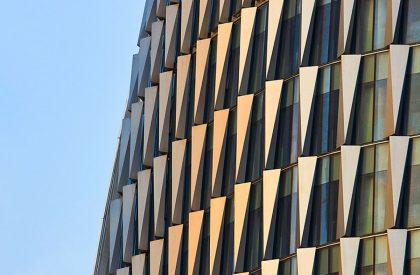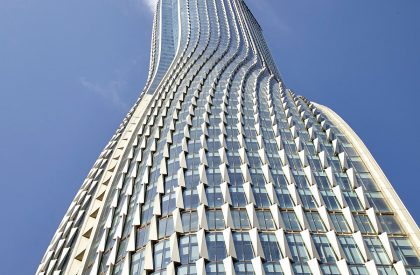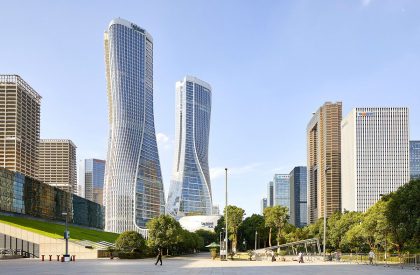Excerpt: Raffles City Hangzhou, designed by UNStudio, is a sustainable urban hub for living, working and leisure, becoming a major landmark. The project furthers the practice’s ongoing research into Superliving, in this case into (integral) strategies to create sustainable, healthy cities that offer a high quality of life, while addressing future needs for greater efficiency and density in cities in times of rapid urbanisation and growth.
Project Description
[Text as submitted by Architect] Project team: Shu Yan Chan, Garett Hwang, Markus van Aalderen, Marc Salemink, Juergen Heinzel, Tom Minderhoud, Abhijit Kapade, Anna von Roeder, Hisa Matsunaga Juliane Maier, Yuwei Wang, Miklos Deri, Shuojiong Zhang, Iris Pastor, Praneet Verma
Team members in different project phases: Wing Tang Man, Michael Sims, Rudi Nieveen, Mo Ching Ying Lai, Fernie Lai, Alexander Hugo, Paula Ibarrondo, Richard Teeling, Fahad Mohammad, Daniel Bazo Hernandez, Shusuke Inoue, Qiyuan Ding, Ke Zou, James Leng, Craig Yan, Brendon Carlin, Adrian Schmitz, Steffen Riegas, Marina Bozukova, Qiwei Liang, Gary Freedman, Andreas Bogenschütz, Chao Wei, Justin Tao Cheng, Cristina Gimenez, Yi Cheng Pan, Lukas Allner, Freek Waltmann, Bartosz Lamperski, Marcin Molik, Costa Krautwald, Ioana Sulea, Ting Li, Stella Shen Chenyi, Johan Andersson, Magda Smolinska, Georg Willheim, Felix Lohrmann, Rodrigo Canizares, Rein Werkhoven, Severin Ignaz Tuerk, Marcin Koltunski, Hans Peter Nunning, Luming Wang, Eric Zhu, Leo Habsburg, Yi Whenzhen, David Chen, Zhenfei Wang, Gang Liu, Megan Ng, Peter Moerland, Hyunil Oh, Yang Shi, Philipp Weisz, Wiliam Mac Ivor, Ramon van der Heijden, Daniele De Benedictis, Yue Zhou, John Murphey, Christian Veddeler, Arnold Yok Fai Wong, Caroline Andersen, Stefano Rocchetti, Jordi Calvera, Yeojoon Yoon, Mingxuan Xie, Junjie Yan, Florian Heinzelmann, Patrik Noomé, Earn Lee Chern, William de Boer, Cici Xi Shi, Irina Bogdan, Junseung Woo, Evan Jon Shieh, Abraham Fung, Albert Man Kiu Lo, Alan Chin Che Hung, Dan Luo, Kyle Ching-Yu Chou, Rikjan Scholten
Raffles City Hangzhou – an All-in-One Destination for Living, Working and Leisure
Designed by Ben van Berkel / UNStudio, CapitaLand’s new Raffles City is a sustainable urban hub for living, working and leisure located in Hangzhou, one of China’s most picturesque cities. It forms the eighth Raffles City development in China.
Situated in Qianjiang New Town near Qiantang River, this mixed-use development becomes a major landmark along the green axis of the city’s new CBD. A rich mix of 24/7 functions occupies almost 400,000m2 within two streamlined towers set atop a podium and landscaped plaza.
Conceived as a lively vertical neighborhood and transit hub and featuring stunning views of the river and West Lake areas, the sixty-storey, 250 meter-tall high-rises contain residential units, Grade A offices, the Conrad Hotel and a rooftop helipad; the 116,000m2 six-storey podium accommodates retail, restaurants, leisure facilities and parking and has a direct underground connection to the metro.
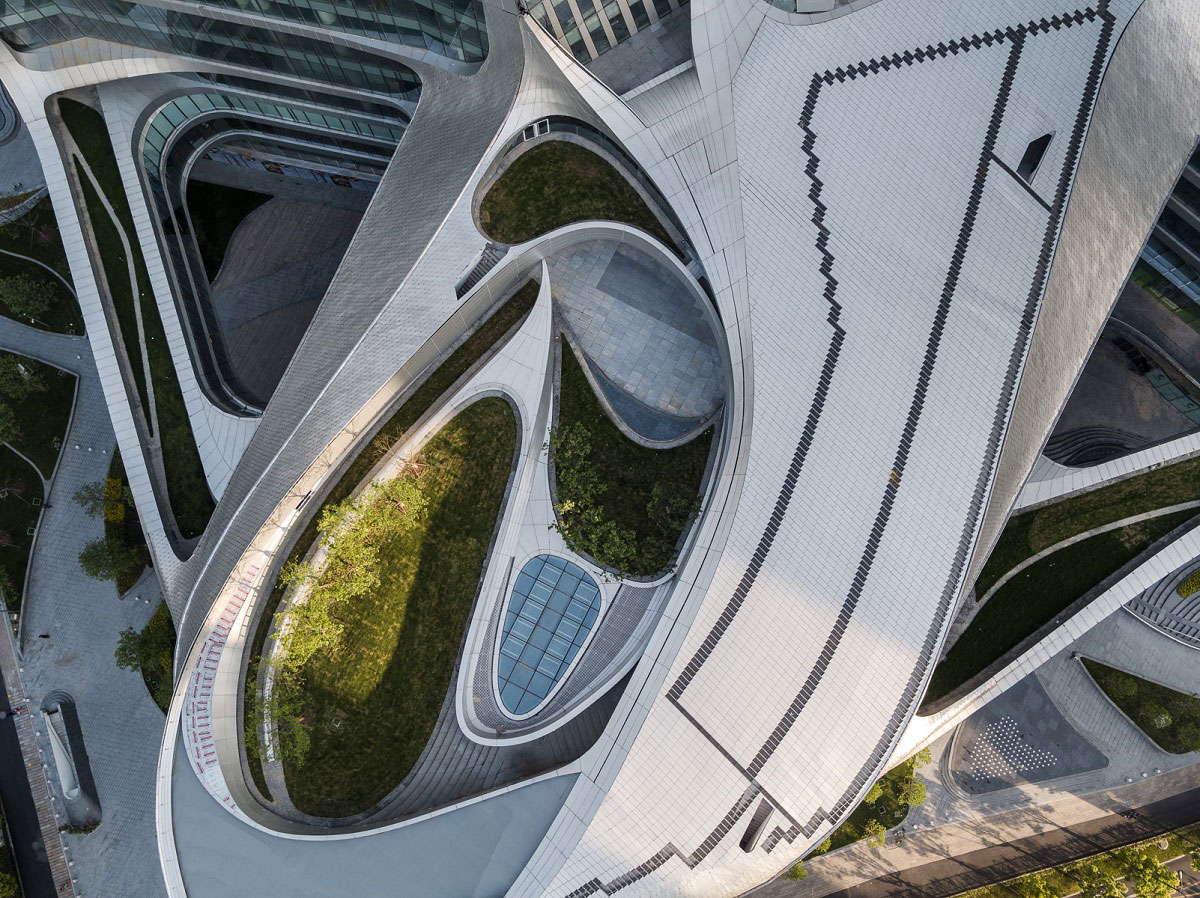

Mixed-use: Healthy future cities
The project furthers the practice’s ongoing research into Superliving, in this case into (integral) strategies to create sustainable, healthy cities that offer a high quality of life, while addressing future needs for greater efficiency and density in cities in times of rapid urbanisation and growth.
The building is designed with a carefully considered mix of programmes – like those found in a good city – that bring together a wide range of users. Besides working and living at Raffles City, people can stay at the hotel, or pick up groceries, enjoy a meal, do exercise, watch a movie or even get married there, all in one interconnected environment.
Landscape
Informed by the city’s famed natural landscape UNStudio’s design creates a local identity for Raffles City, while celebrating its trademark ‘city within a city’ concept. Reflecting the movement in the river, the tower design features a wave-like motion. These concentric waves increase in their dynamism, starting calmly at the base and building up more vigorously along the vertical axis. These formal expressions enabled us to connect the wide variety of programmes throughout the building into one seamless flow.
The design contributes to the landscape character of this green city. Situated diagonally opposite the civic centre, the corner site borders both the urban built-up context and green axis/city park that connects West Lake to the Qiantang River.
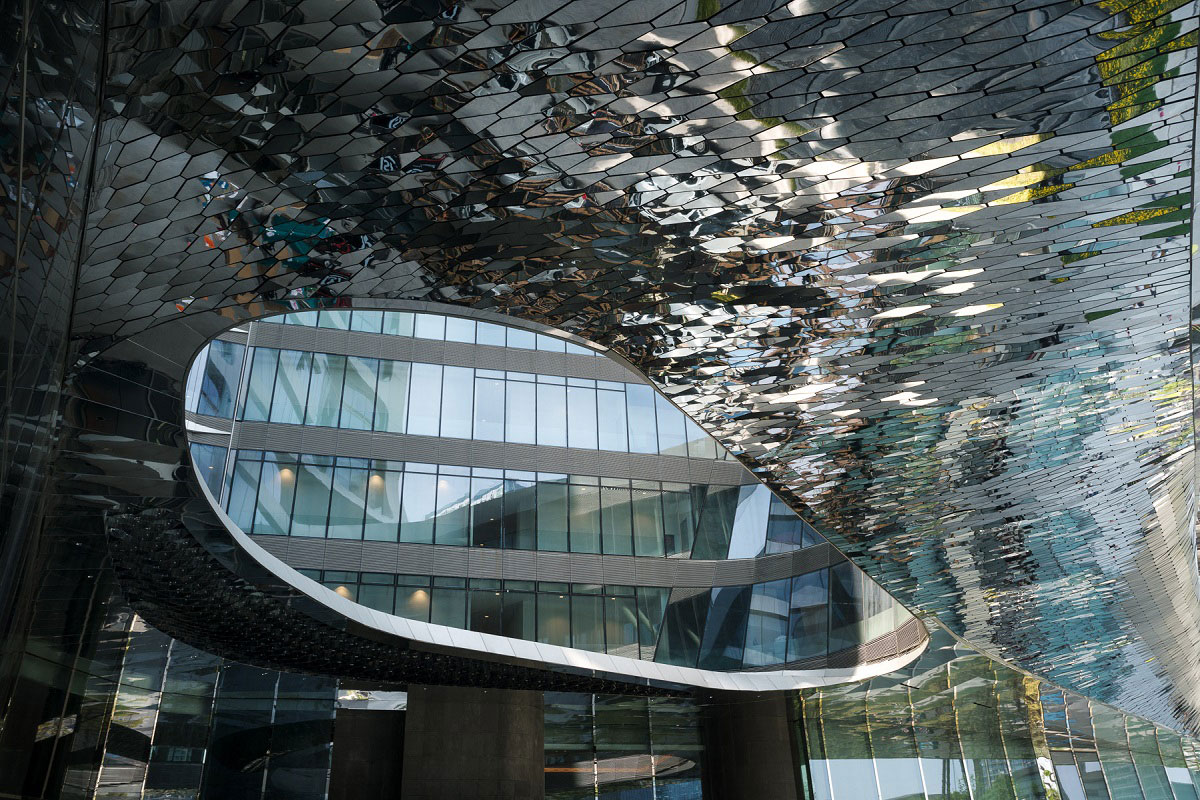
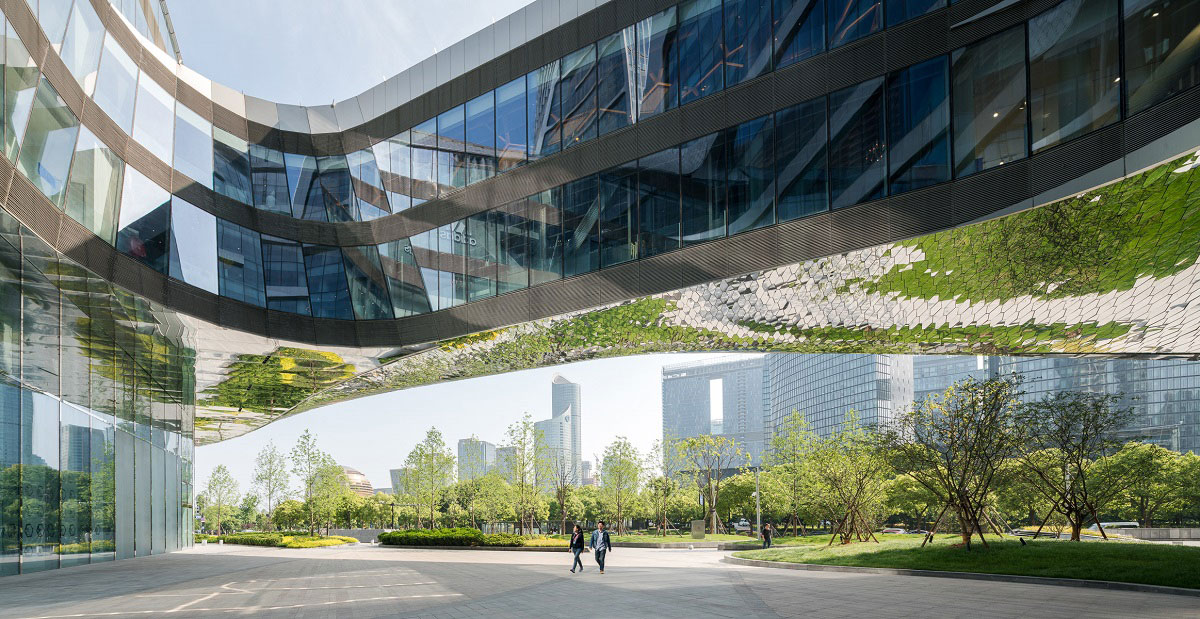
Articulation
The design of the tower and podium facades interplay contrasting textures. Clad in a shimmering scale-like skin of aluminium tiles, the podium facades reflect the building’s activity and landscape to offer pixelated perspectives. The towers feature an outer layer of rotated, vertical solar shading fins, placed atop the curtain wall system. Accentuating the tower’s characteristic twist, they also frame internal views.
Catching the light throughout the day, the lines of panels add a luminous texture to the facade. By night the curvilinear silhouette lights up: this reinforces the building’s prominence and minimises the building’s light pollution as only the outline is illuminated.

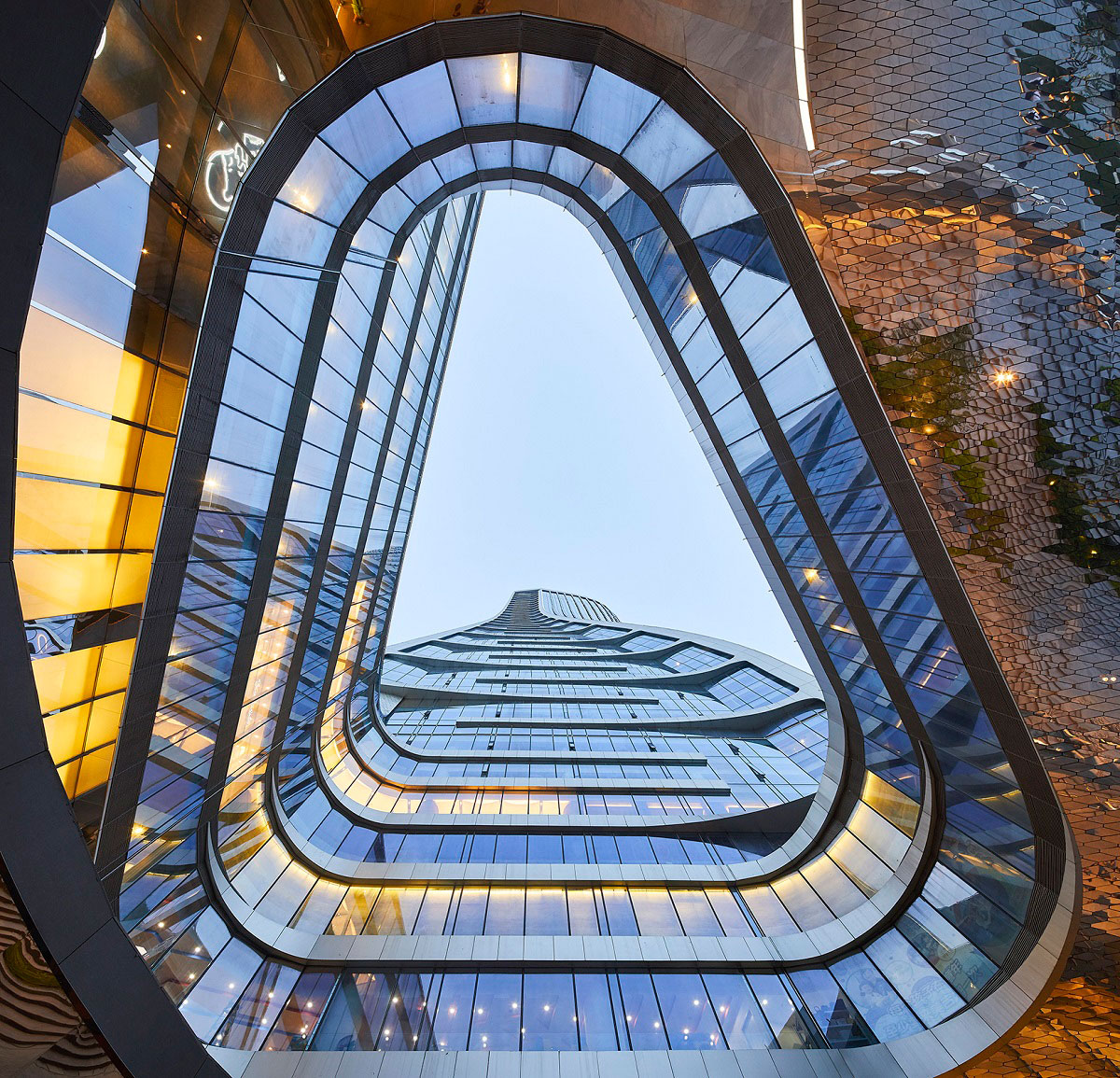
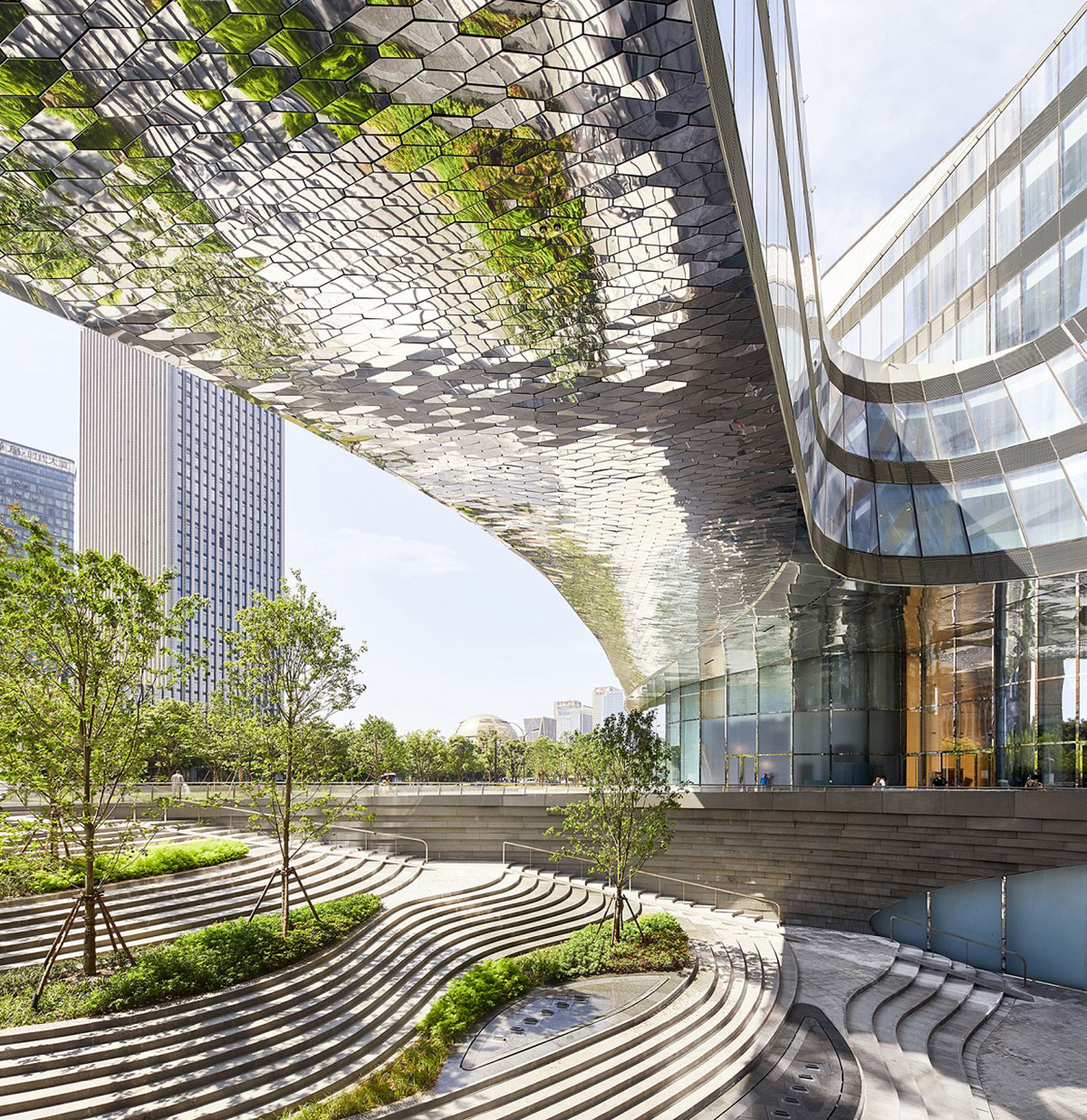
Interior
Situated at the centre of the retail spine, a spectacular atrium forms the organisational and visual focus of the podium interior. The atrium is designed as a spiral of overlapping layers, creating seamless connectivity and extensive sightlines between the spaces.
As a feature detail the bamboo handrail echoes the building’s curvilinear form. Winding its way around the podium as a continuous ribbon, it adds an element of tactility and natural contrast with the futuristic interior.
From here two diagonal voids ascend seven storeys through the opposite wings of the retail spine. As an intuitive finding device, the voids guide visitors along each wing that spans almost 150 metres in each direction.
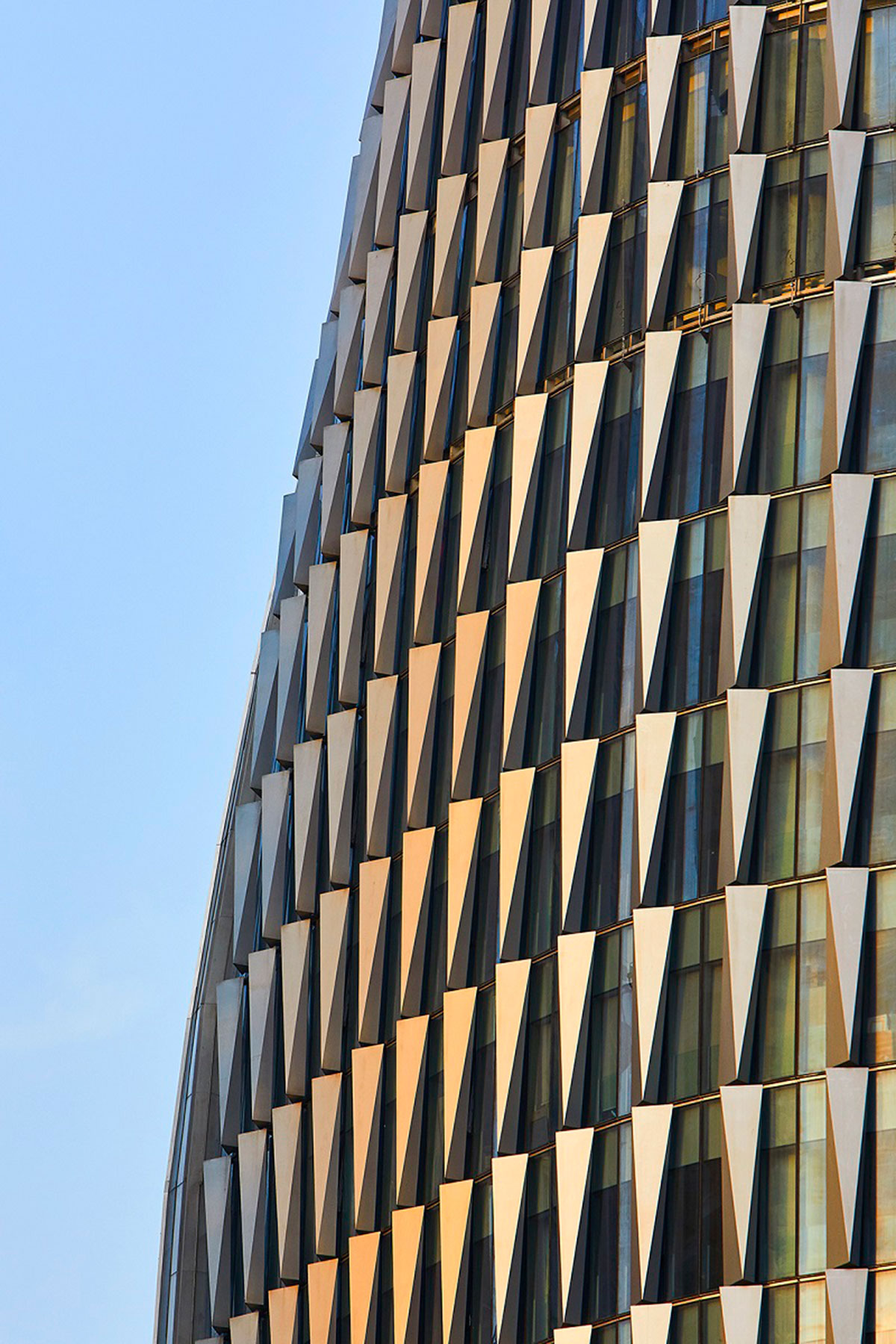
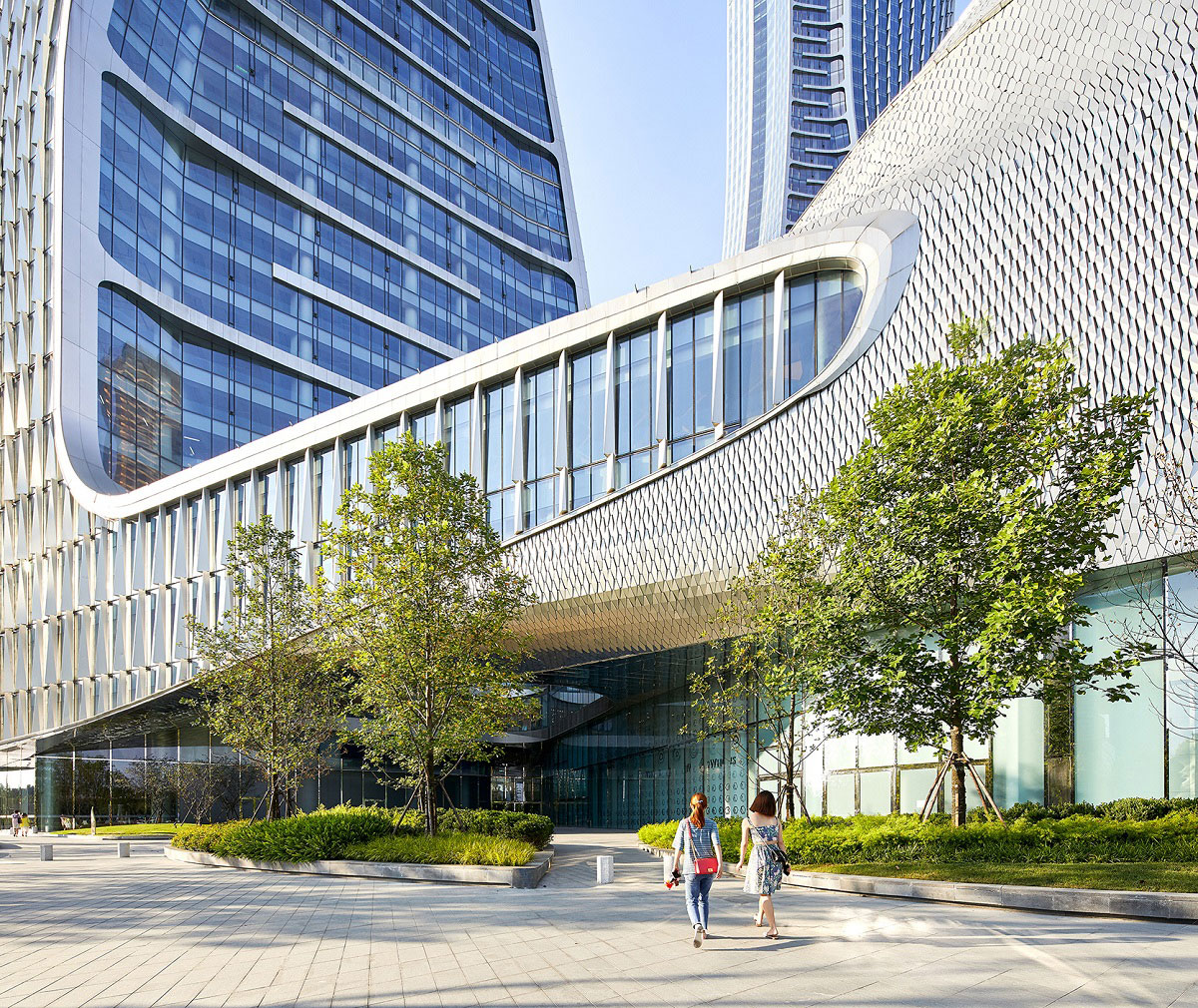
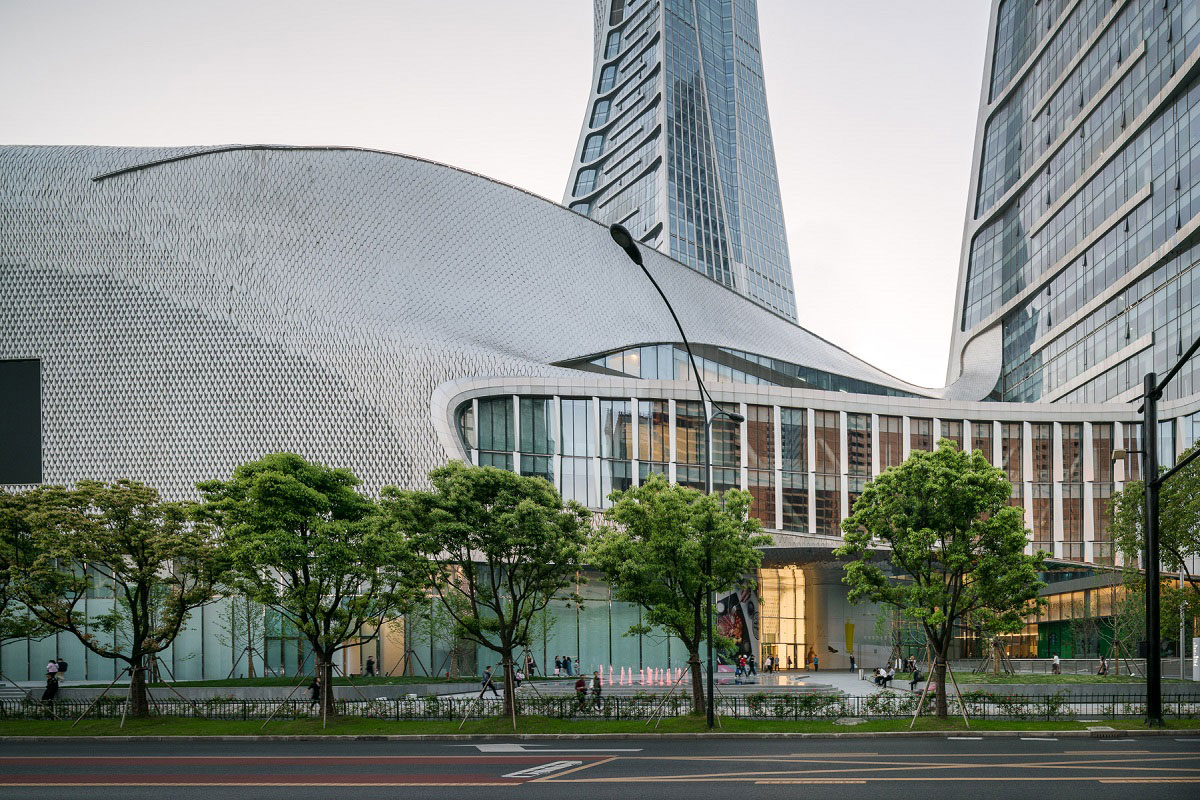
Sustainability
An inclusive approach to sustainability is integral to UNStudio’s design philosophy. The incorporation of natural ventilation, solar gain and daylighting principles tailored to the local context, efficient structure and the ways in which materials are employed all work in concordance with one another to lower the energy and material demands of the building. Raffles City Hangzhou is the first retail mall in China to use natural ventilation on a large scale and has achieved Gold LEED certification.
